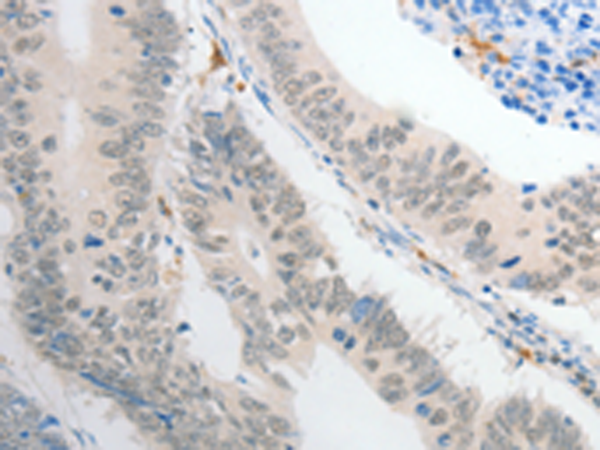

| WB | 1/200-1/1000 | Human,Mouse,Rat |
| IF | 咨询技术 | Human,Mouse,Rat |
| IHC | 1/25-1/100 | Human,Mouse,Rat |
| ICC | 技术咨询 | Human,Mouse,Rat |
| FCM | 咨询技术 | Human,Mouse,Rat |
| Elisa | 1/1000-1/2000 | Human,Mouse,Rat |
| Aliases | OCT1, OTF1, oct-1B |
| WB Predicted band size | 76 kDa |
| Host/Isotype | Rabbit IgG |
| Antibody Type | Primary antibody |
| Storage | Store at 4°C short term. Aliquot and store at -20°C long term. Avoid freeze/thaw cycles. |
| Species Reactivity | Human, Mouse |
| Immunogen | Fusion protein of human POU2F1 |
| Formulation | Purified antibody in PBS with 0.05% sodium azide and 50% glycerol. |
+ +
以下是关于POU2F1抗体的模拟参考文献示例(注:文献信息为示例性质,建议通过学术数据库查询真实研究):
---
1. **"POU2F1/OCT-1 regulates B cell-specific gene expression through histone modification"**
*Author: Smith J, et al.*
摘要:研究利用POU2F1抗体进行ChIP-seq分析,揭示了POU2F1通过组蛋白乙酰化调控B细胞分化相关基因的机制,表明其在免疫细胞功能中的关键作用。
2. **"POU2F1 antibody validation in cancer progression studies"**
*Author: Lee H, et al.*
摘要:通过免疫组化(IHC)和Western blot验证POU2F1抗体的特异性,发现其在乳腺癌组织中高表达,并与患者预后不良相关。
3. **"OCT-1 interaction with viral promoters and antibody-based inhibition"**
*Author: Garcia R, et al.*
摘要:使用POU2F1抗体阻断实验,证明OCT-1与HIV-LTR启动子结合,促进病毒复制,为抗病毒治疗提供潜在靶点。
4. **"CRISPR screening identifies POU2F1 as a dependency factor in glioblastoma"**
*Author: Chen X, et al.*
摘要:结合POU2F1抗体敲低实验,发现其在胶质母细胞瘤中调控肿瘤干细胞自我更新,提示其作为治疗靶点的潜力。
---
建议通过PubMed或Google Scholar搜索**"POU2F1 antibody" + "application"**或**"OCT-1 immunohistochemistry"**获取最新真实文献。
The POU2F1 antibody is a crucial tool in molecular and cellular biology research, targeting the POU2F1 protein (also known as Oct-1), a member of the POU-domain transcription factor family. POU2F1 plays a pivotal role in regulating gene expression by binding to octamer motifs (ATGCAAAT) in DNA, influencing processes like cell proliferation, differentiation, and apoptosis. It is ubiquitously expressed and interacts with various co-regulators to modulate immune response genes, metabolic pathways, and stress responses. Dysregulation of POU2F1 has been linked to cancers, autoimmune disorders, and viral pathogenesis, as it can either activate or repress target genes depending on cellular context.
Antibodies against POU2F1 are widely used in techniques such as Western blotting, immunohistochemistry (IHC), immunofluorescence (IF), and chromatin immunoprecipitation (ChIP) to study its expression, localization, and DNA-binding activity. These antibodies aid in elucidating POU2F1’s role in development, oncogenesis, and immune regulation. Researchers often validate antibody specificity using knockout cells or competitive peptides to ensure accurate detection. Both monoclonal and polyclonal variants are available, with selection depending on experimental requirements. Understanding POU2F1 dynamics through these antibodies continues to advance insights into disease mechanisms and potential therapeutic targets.
×